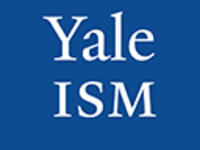
Liturgy as Rhetoric in 12th-Century Women’s Monasticism
Part of the 2009-2010 Liturgy Symposium
Institute of Sacred Music Great Hall, 409 Prospect Street
Refreshments for mind, body, and spirit will be served. Free and open to the public.
During the second half of the twelfth century, monastic discussions of ‘intentio’ (the problem of how one’s disposition might be aligned with one’s action) gained a widespread influence, extending to wider discussions in both dogmatic theology (atonement theory) and ethics. Concurrently, liturgies written for new and newly-revived monasteries (especially liturgies written for women’s institutions) show an increased attention to rhetoric. This can be demonstrated by examining the overall compositional planning that pays greater attention to the specific participants for whom the liturgies were revised. Since monastic liturgies had a stable and traditional ‘core’, revisions were achieved by altering only a few features (directly affecting the office more than the mass). Nevertheless, new materials were often carefully selected and created in order to shift the ways in which the participants were led through the traditional materials, i.e., they were constructed specifically to create a shift in rhetorical ductus (progression). Even though most of the words and music remained the same, the revised liturgies could thus be clarified and re-directed to women’s communities. This lecture is based on my recent and ongoing work on central liturgies from two of the most famous Benedictine convents of the period: the Paraclete (Easter Day) and Rupertsberg (St Ursula) and shows two quite different responses taken by some of the most intellectually gifted Benedictines of the period: Heloise, Abelard and Hildegard of Bingen.
William Thomas Flynn, University of Leeds, Institute for Medieval Studies, is the author of Medieval Music as Medieval Exegesis (Scarecrow, 1999), which investigates the cross-fertilization of the elementary study of grammar, rhetoric, music and liturgy and its effects on the production and interpretation of biblical commentary in the eleventh century church. Recent publications include “Ductus figuratus et subtilis: Rhetorical Interventions for Women in Two Twelfth-Century Liturgies’, in Rhetoric Beyond Words, ed. Mary Carruthers (Cambridge University Press, 2009); “Singing with the Angels: Hildegard of Bingen’s Representations of Celestial Music,” in Conversations with Angels, ed. Joad Raymond (Houndsmills: Palgrave, forthcoming 2009); “Letters, Liturgy and Identity: The Use of the Sequence Epithalamica at the Paraclete,” in Sapientia et Eloquentia: Meaning and Function in Liturgical Poetry, Music, Drama, and Biblical Commentary in the Middle Ages, ed. Gunilla Iversen and Nicolas Bell (Turnhout: Brepols, 2009). Other publications include chapters on liturgical music in the Oxford History of Christian Worship and Liturgy and Music: Lifetime Learning, and, with Jane Flynn, a forthcoming translation, Laus Angelica: Poetry in the Medieval Mass (Brepols, forthcoming 2009), of Gunilla Iversen’s Chanter avec les anges. BMus, Eastman School of Music (University of Rochester), 1978; MMus, Edinburgh University, 1979; MA, Duke University, 1988; Ph.D. (Theology), Duke University, 1992.